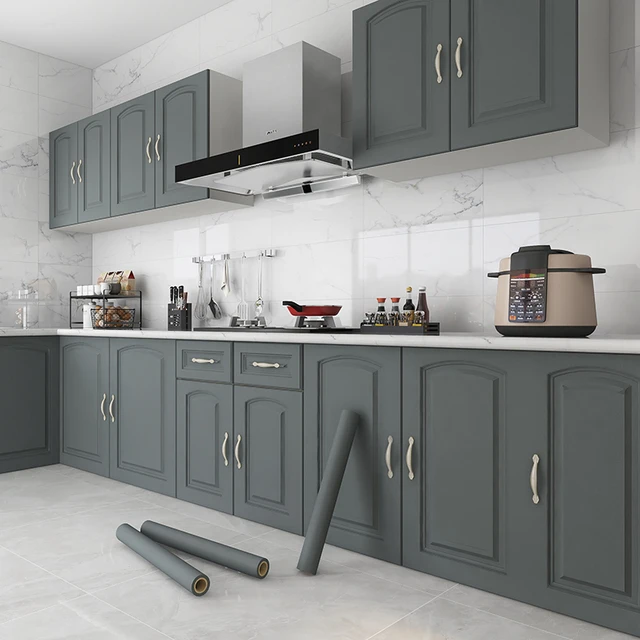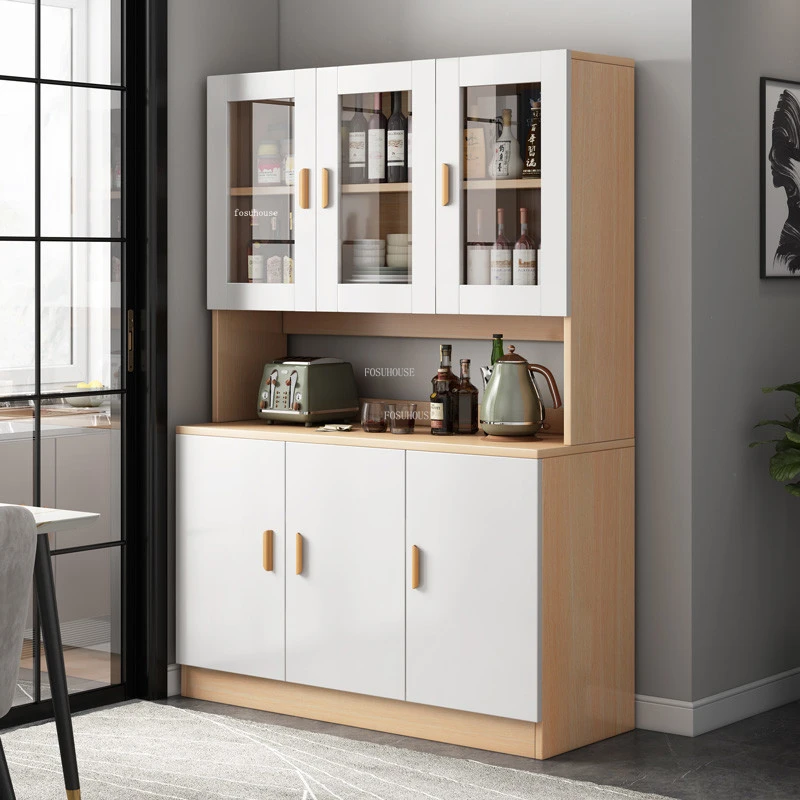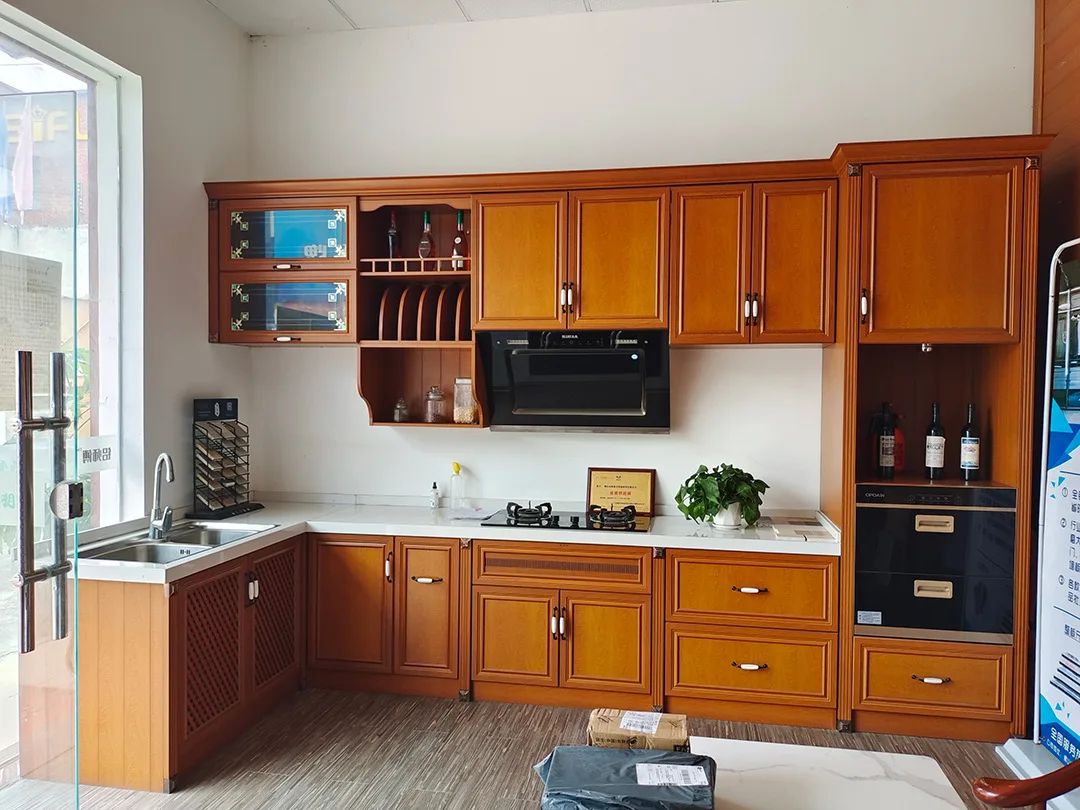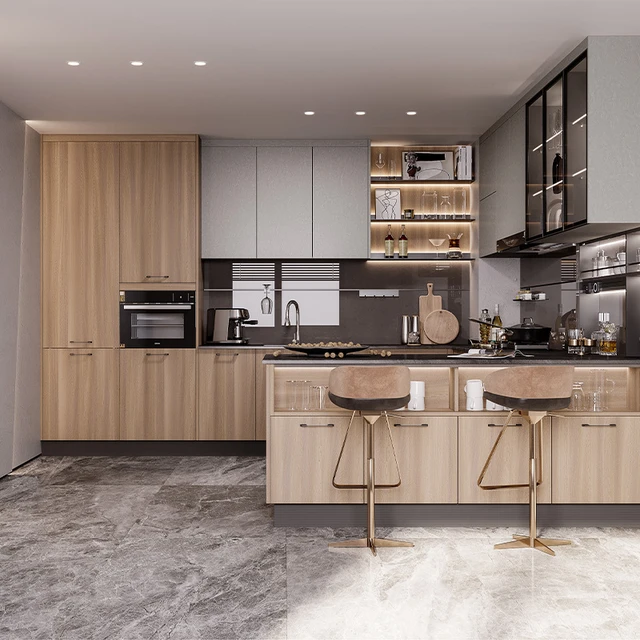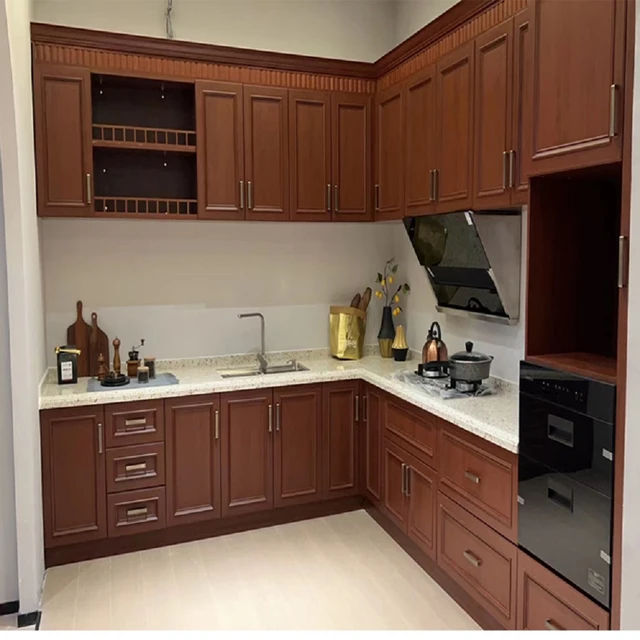 Introduction:
Introduction:
Spray painting kitchen cabinets is a cost-effective and efficient way to transform the look of your kitchen. Whether you want to update the cabinets with a fresh color or give them a new lease on life, spray painting offers a smooth and professional finish.
Some common materials and types of cabinets:
Spray paint kitchen cabinets can be done on a variety of materials and types of cabinets. Here are some common materials and types of cabinets that can be spray painted:
Wood Cabinets:
Wood spray paint kitchen cabinets are a popular choice in kitchens and can be spray painted to give them a fresh, updated look. Whether they are solid wood or veneer, spray painting can be done to enhance their appearance and transform the overall style.
Laminate Cabinets:
Laminate cabinets are made of a synthetic material with a printed surface. While they are more challenging to paint than wood cabinets, spray painting can still be done with proper preparation and the use of suitable primer and paint designed for laminate surfaces.
MDF Cabinets:
Medium-Density Fiberboard (MDF) cabinets are made from compressed wood fibers and are often used as a more affordable alternative to solid wood. They can be spray painted to create a smooth and even finish, but it’s essential to prime them properly to prevent absorption of paint.
Metal Cabinets:
Some kitchens feature metal cabinets, particularly in retro or industrial styles. Metal cabinets can be spray painted to change their color or refresh their appearance. It is important to use paint specifically formulated for metal surfaces to ensure proper adhesion and durability.
Thermofoil Cabinets:
Thermofoil cabinets have a vinyl or laminate surface that is heat-pressed onto a substrate. While it is possible to spray paint thermofoil cabinets, it requires thorough cleaning, proper priming, and the use of paint specifically designed for this type of surface. Professional assistance may be advised for a successful outcome.
It’s important to note that the success of spray paint kitchen cabinets depends on proper preparation, including thorough cleaning, sanding, and priming. Using high-quality spray paint and applying multiple thin coats will help achieve a smooth and durable finish. Additionally, seeking professional advice or assistance may be beneficial, especially for complex cabinet surfaces or if you are unsure about tackling the project on your own.
Preparing the Cabinets:
Remove Cabinet Hardware:
Start by removing all cabinet hardware, including hinges, knobs, and handles.
This ensures an even and clean painting surface.
Clean the Surfaces:
Thoroughly clean the cabinet surfaces to remove grease, dirt, and grime.
Use a mild detergent and warm water, and scrub with a soft cloth or sponge.
Sanding:
Lightly sand the cabinet surfaces to create a rough surface for better paint adhesion.
Use a fine-grit sandpaper and sand in the direction of the wood grain.
Fill Any Holes or Imperfections:
Fill any holes, dents, or scratches with wood filler.
Allow the filler to dry completely and sand it smooth.
Masking and Protecting:
Cover Surrounding Areas:
Use plastic drop cloths or masking paper to cover surrounding countertops, floors, and appliances.
This protects them from overspray and ensures easy cleanup.
Mask Cabinet Interiors:
If you’re not painting the cabinet interiors, cover them with plastic or masking paper.
This prevents paint from getting inside and affecting the functionality of the cabinets.
Priming the Cabinets:
Select a Primer:
Choose a high-quality primer suitable for your cabinet material.
Consider a bonding primer for better adhesion and durability.
Apply Primer:
Apply the primer evenly over the cabinet surfaces using a paintbrush or roller.
Follow the manufacturer’s instructions for drying times between coats.
Sand the Primed Surfaces:
After the primer has dried, lightly sand the surfaces to ensure a smooth and even base for the topcoat.
Use a fine-grit sandpaper and sand in the direction of the wood grain.
Choosing the Right Spray Paint:
Select a Paint Type:
Choose a high-quality spray paint specifically formulated for cabinets.
Opt for a paint with good coverage, durability, and resistance to scratches and stains.
Color Selection:
Consider your kitchen’s overall theme and style when selecting the paint color.
Test different colors on a small area or sample board to ensure it complements the space.
Spraying the Cabinets:
Set Up a Spray Area:
Find a well-ventilated area to spray the cabinets, preferably outdoors or in a well-ventilated garage.
Protect the surrounding area with drop cloths or masking paper.
Practice on a Test Board:
Before spraying the cabinets, practice on a test board or similar surface to get a feel for the spray pattern and technique.
Apply Thin Coats:
Hold the spray can 8-12 inches (20-30 cm) away from the cabinets and apply thin, even coats.
Overlapping each pass slightly ensures full coverage.
Patience is Key:
Allow each coat to dry completely before applying the next layer.
Follow the manufacturer’s instructions for drying times between coats.
Sanding Between Coats:
Lightly sand each coat once it has dried to remove any imperfections or rough areas.
Use a fine-grit sandpaper and sand in the direction of the wood grain.
Finishing the Cabinets:
Applying a Topcoat (Optional):
For added durability and protection, consider applying a clear topcoat suitable for cabinets.
Follow the manufacturer’s instructions for proper application and drying times.
Reattaching Cabinet Hardware:
Once the paint is fully dry, reattach the cabinet hardware using a screwdriver, ensuring a secure fit.
Maintenance and Care:
Curing Time:
Allow the paint to fully cure according to the manufacturer’s instructions before using the cabinets.
This ensures the paint has hardened and is less susceptible to scratches or damage.
Cleaning:
Clean the painted cabinets regularly with a mild detergent and warm water.
Avoid using abrasive cleaners or scrub brushes that may damage the painted surface.
Gentle Handling:
Be mindful of the painted surfaces and avoid banging or scratching the cabinets.
Use gentle handling and avoid placing heavy objects on them.
Conclusion:
Spray painting kitchen cabinets is an excellent way to update and transform your kitchen without the hassle and expense of a full renovation. By following the step-by-step guide outlined in this comprehensive article, you can achieve professional-looking results. Remember to properly prepare the spray paint kitchen cabinets, choose suitable primers and spray paints, and apply thin, even coats. With proper care and maintenance, your newly painted cabinets will enhance the beauty and style of your kitchen for years to come.
